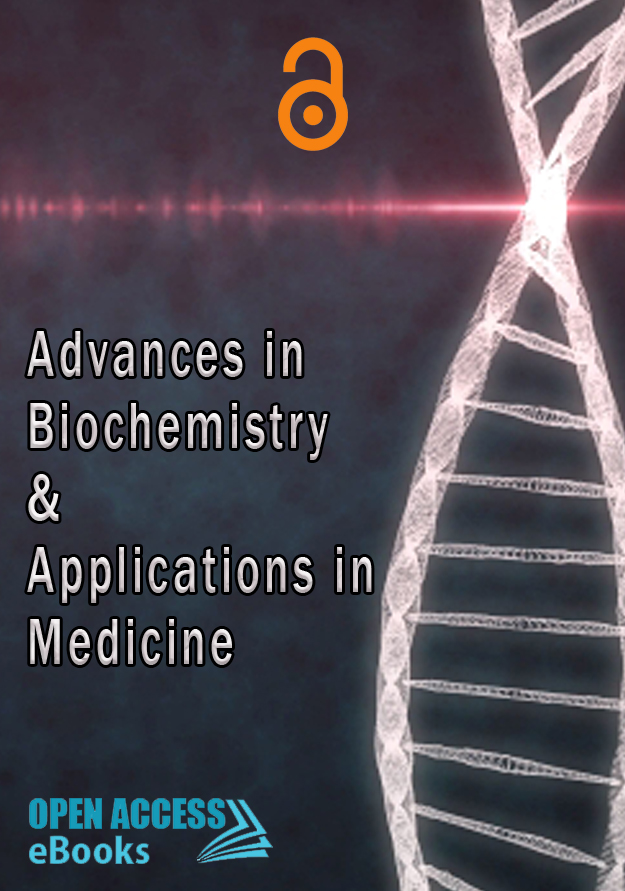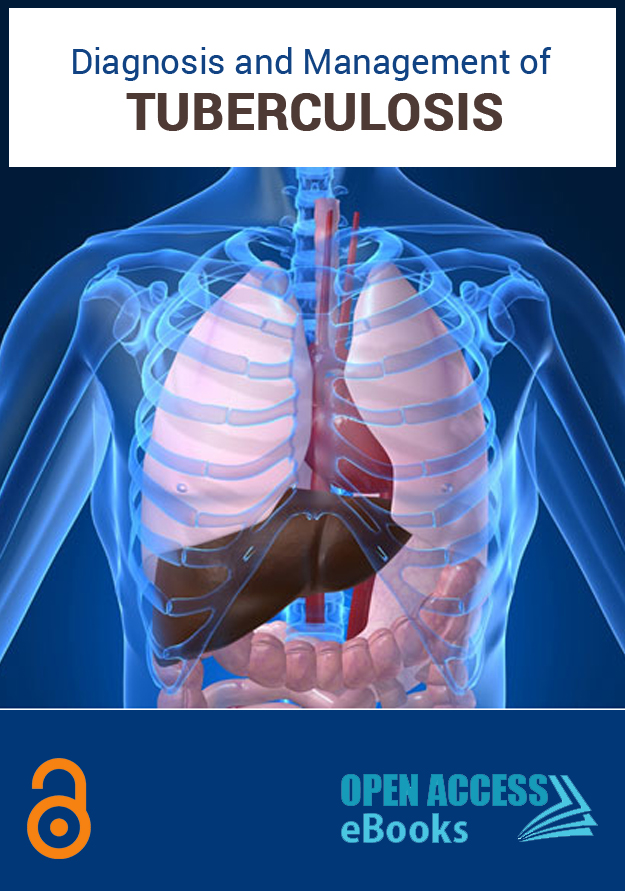
E-mail: biochem-med@openaccessebooks.com
Volume 3
ISBN: 978-93-87500-22-8
Editors:
1. Rojeet Shrestha
Biochemistry, also called as Biological Chemistry is the study of chemical processes of living organisms. It is a branch of science using chemical knowledge to understand and solve biological problems. Biochemistry has various applications in medicine and researchers are invited to submit their valuable work for the possible publication in an eBook entitled ADVANCES IN BIOCHEMISTRY & APPLICATIONS IN MEDICINE.
Benefits of publishing with us:
Universal Access: eBooks published in Open Access eBooks gain international visibility. No region barriers and content is accessed by everyone across the world from our website. We also deposit published eBooks in different databases.
Freely Available: Open Access eBooks follows the principles of Open Access and the content is available to the readers without any cost. Readers can read, share, and store the published ebooks/book chapters.
Copyright with Authors: As an eBook publisher, we serve researchers in publishing their valuable work after the stringent review process. However, copyright lies with authors. We follow the CC-BY-NC-ND license (https://creativecommons.org/licenses/by-nc-nd/3.0/).
Different Formats: We provide eBooks in PDF and HTML formats. Both formats are user friendly and can act as per the user requirements. We put our efforts to provide other formats in future.
For more information, contact info@openaccessebooks.com
Published Chapters:
Protein-Protein Interactions as Potential Targets of Drug Designing
Author(s): Zeeshan Zahoor Banday; Ghulam Md Ashraf*
Protein-protein interactions (PPIs) control a large number of biological processes. An attempt to design novel drug molecules has led to an increasing interest in the protein surfaces. Studying interaction interfaces in PPIs has set the stage for drug discovery to identify therapeutic agents for a range of human ailments. Inhibiting or stabilizing PPIs with small molecule drugs controls cellular behaviours significantly affecting disease outcomes. On one hand inhibiting PPIs can modulate pathological conditions, while on the other hand stabilizing certain PPIs can potentially treat diseases. It is, therefore, the calculated targeting of specific PPIs, with either small molecule inhibitors or stabilizers, which will have significant pharmacological value. PPIs control regulatory pathways and have been widely studied to design novel chemotherapeutics. Examples of certain small molecule drugs targeting PPIs involved in different biological pathways are discussed here in.
Nanotechnology and Nanomedicine:Going Small Means Aiming Big
Author(s): Himani; Surina Bhadu; Jayanti Tokas*
Nanotechnology is an emerging multidisciplinary field of science and technology that works at the molecular and atomic level. It has a major contribution in the development of key novel products in different regimes of science. In field of medicine, development of novel imaging agents, pharmaceutical nano-formulations are being developed for the betterment of the human health. Drug delivery using nanoparticles is an attractive advancement in medicine that enables targeted drug-delivery to attain attractive therapeutic efficacy. Recently used drug delivery system includes, polymeric micelles, liposomes, dendrimers and many others reveal a wide variety of useful properties. Conventional drug delivery methods represent several disadvantages because of off-target action and shows severe toxic health effects. Nanomedicine is an approach of nanotechnology, being applied for diagnosis and treatment of highly infectious diseases like cardiovascular diseases, Alzheimer's disease, Parkinson's disease, using nanoscale particles and nanorobots which is a major risk to mankind. Here, we provide a broad overview of nanoparticles, its novel applications, formulations and commercialization in the field of medicine using synthetic and natural nanopolymers.
Anti-Gastric Ulcer Activity of Aqueous Extract of Terminalia Arjuna Against Helicobacter Pylori Lipopolysaccharide
Author(s): Devi RS*; Viswaja K; Shyamala Devi CS
Gastric ulcer is a common disease in humans. Every human might undergo the episode of gastric ulcer at least once in their life time. Among the various causes of gastric ulcer, Helicobacter pylori are one among them. The lipopolysaccharide is one of the virulence factors of H. pylori. The natural /holistic approach for the treatment/prevention is needed for all diseases including gastric ulcer due to its lack of adverse effects. Terminalia arjuna bark is one of the natural drug, which underwent clinical trials for cardio vascular diseases was chosen to study the antiulcer effect of Terminalia arjuna aqueous extract in H.pylori LPS induced gastric ulcer in rats. Gastric ulcer was induced in Sprague dawley rats with H. pylori LPS and Terminalia arjuna aqueous extract was administered to study the anti-ulcer activity. The assessment of anti-gastric ulcer was performed by testing the acid secretory and mucosal defensive factors. As a result of this study we could conclude that the aqueous extract of Terminalia arjuna offered anti-gastric ulcer effect.
Recent Updates on Biomarkers of Gastric Cancer
Author(s): Zeeshan Zahoor Banday; Ghulam Md Ashraf*
Gastric cancer (GC) or stomach cancer, is one of the most common malignancies worldwide. It ranks second in terms of global cancer-related mortality and fourth in terms of incidence among various ethnic groups. The etiology of GC is multifactorial and includes dietary as well as non-dietary factors. Despite many efforts, GC remains to be the condition without clear symptoms at the onset, poor prognosis and high recurrence. Thus, there is an urgent need to find efficient assays to identify gastric cancer biomarkers for treatment of the disease. Here, we review the most effective biomarkers for gastric cancer with a potential for the early detection and treatment of GC.
Application of Mass Spectrometry to Analyse Protein Structure within a Live Cell
Author(s): Bindu Y Srinivasu; Amit Kumar Mandal*
In depth understanding of molecular mechanisms of cellular processes requires protein structure-function correlation to investigate in its endogenous environment. Due to identical chromophoric groups present across all proteins within a cell, the different spectroscopic tools that are utilized to visualize protein structure cannot be used within a crowded molecular environment in vivo. Molecular mass is the molecular signature of a molecule. Thus, mass spectrometry that measures molecular mass, could be used to investigate a single molecular entity in an unpurified sample. In fact, mass spectrometry might be an appropriate biophysical technique that could be used to solve protein structure even in a heterogeneous molecular pool such as inside a live cell. In vivo application of mass spectrometry to monitor protein structure and stability is little older than a decade. In this chapter we highlighted following three different types of mass spectrometry based biophysical techniques that had been used to elucidate structure and conformational dynamics of proteins and to map protein-protein interactions within a live cell: Hydrogen deuterium exchange of back bone amide hydrogens of a protein, Free radical mediated fast photochemical oxidation and Cross linking of proteins.
Natural Polyphenol-Dendrimers Nano-Formulations for Therapeutic Applications in Medicine
Author(s): Eleftherios G Halevas; Anastasia A Pantazaki*
Curcuminoids, alkaloids and flavonoids (or bioflavonoids) constitute the broadest and well-studied classes of natural polyphenols and they belong to plant-derived secondary metabolites. Recently, polyphenols have attracted significant interest in the scientific community due to their antioxidant potential to confront and scavenge the free radicals generated during the various pathological processes including neurodegenerative disorders, cancer, and cardiovascular diseases. Dendrimers are three-dimensional hyperbranched polymeric macromolecular structures consisting of symmetrically repetitive branched moieties around a central core, thus adopting a globular structure...


